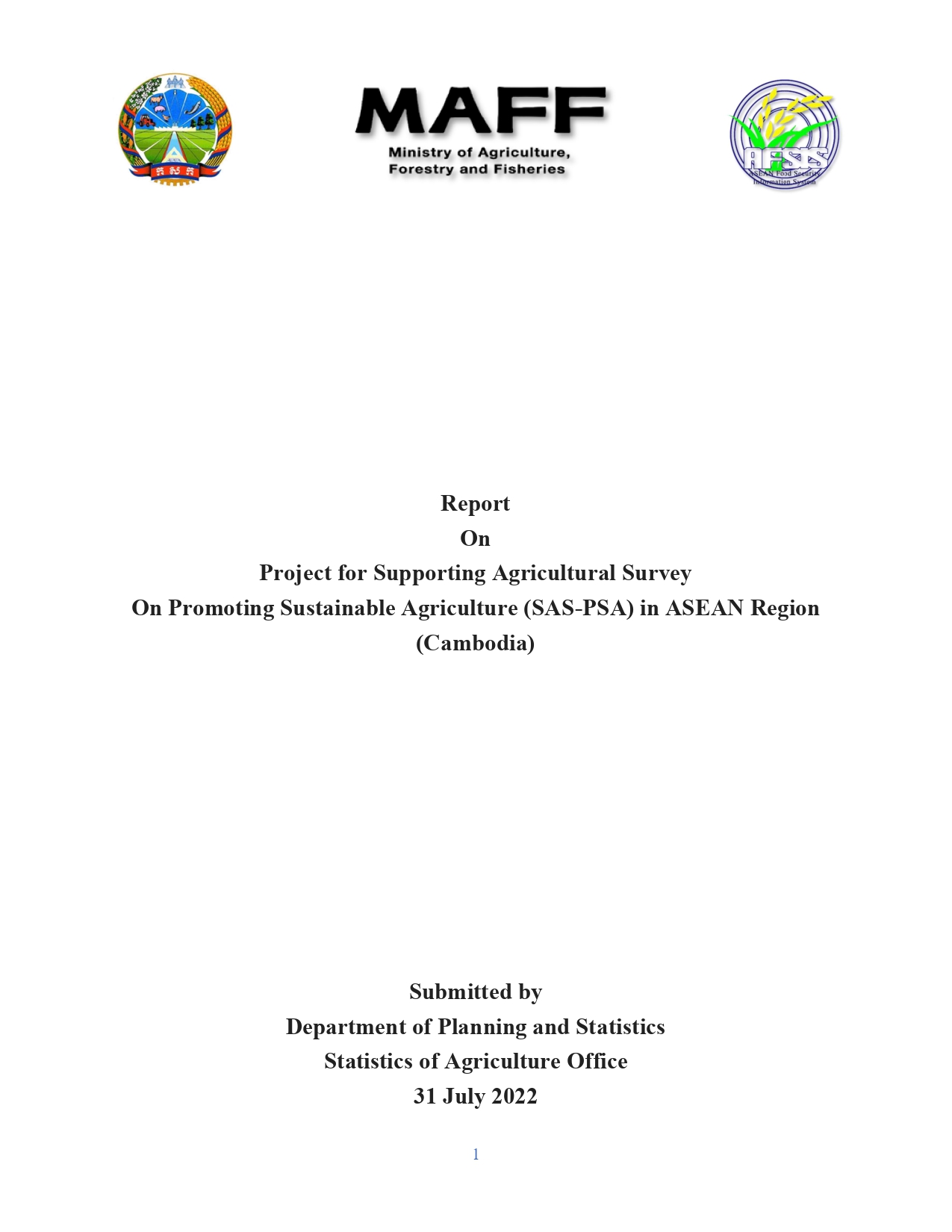


Battambang Province, located in north-western Cambodia around 291 km from Phnom Penh. Approximately 76% of the total populations in Battambang province have fully relied on agricultural productions, especially the rice production. Battambang province has divided land areas into three main areas such: i) Upland: is an area of fruit and vegetable plantation in the west, ii) Plain land or Rice fields, and iii) Lowland: Tonle Sap area, located east of Battambang. The total area is 1,162,200 hectares, of which 415,200 hectares are for agricultural land areas (35.72%) and divided into 3 parts such; i) Floating rice land areas are comprised of 32,600 hectares; ii) Rice land areas are comprised of 282,500 hectares; and iii) Crop land areas are comprised of 100,100 hectares. In addition to agricultural cultivated land areas, the 38.22% is the mountain areas, 12.54% is the flooded forests, and 3.65% is the rivers, lakes, and reservoirs.
Sub-indicator 1: Farm output value per hectare
Sub-indicator 1: Farm output value per hectare (cagory of farm)
Sub-indicator 2: Net farm income
Sub-indicator 3: Risk mitigation mechanisms
Environmental DimensionSub-indicator 4: Prevalence of soil degradation
Sub-indicator 5: Variation in water availability
Sub-indicator 6: Management of fertilizers
Sub-indicator 1 : Farm output value per hectare

Sub-indicator 1 : Farm output value per hectare (catgory of farm)

Sub-indicator 2 : Net farm income

Sub-indicator 3 : Risk mitigation mechanisms

Sub-indicator 4 : Prevalence of soil degradation

Sub-indicator 5 : Variation in water availability

Sub-indicator 6 : Management of fertilizers

Sub-indicator 7 : Management of pesticides

Sub-indicator 8 : Use of biodiversity-supportive practices

Sub-indicator 9 : Wage rate in agriculture

Sub-indicator 10 : Food insecurity experience scale (FIES)

Sub-indicator 11 : Secure tenure rights to land

SDG 2.4.1 Dashboard
The sub-indicator with the highest level of unsustainability is Farm Output Value per Hectare with 81.5%. This result was largely influenced by the fact that many main crop farmers with medium and large areas of agricultural land had low farm output value per hectare. This may be due to a lack of management and lower productivity as the size of the farm increases. Also, during Covid-19, the cost of agricultural inputs was high (fertilizer, pesticide, transportation operations and etc.) which affected to soil degradation and technical practices are still limited.

1) The availability of an appropriate sampling frame is crucial for conducting validated surveys. Basically, because the sampling frame captures the relationship between the target population and the unit of observation. This pilot project although used existed sampling frame, ostensibly there is unavailable sample frame for the non-household sector.
2) It would be more effective if we develop the appropriate policy-making in a small scale first and expand it in a bigger scale to accumulate a track record of effectiveness. The survey found it very difficult for respondents to understand the point that they had to give a monetary value for their self-consumption of what they produced.
3) If the government encourage farmers to be more aware of health risks from pesticides, biological pest control and using drones for crop fertilization may be effective.
4) Cambodia may need crop cutting survey on permanent crop (rubber, cassava, cashew, nut, mango and etc.) and livestock (Pigs, buffalos, cow, chickens, duck, and etc..) to support SDG 2.4.1
5) For questionnaire, the best practices would be (1) the multiple- choice questions would need to be adjusted to suit Cambodia circumstances (2) the questionnaire should be simplified and comprehendible so that it will not be a burden for both numerators and selected respondents.


Visitor Info 236241 | Today 232 | Yesterday 211 | This week 2023 | This Month 5352 | Total 236241
Copyright 2017. ASEAN Plus Three
Food Security Information System Rights Reserved.